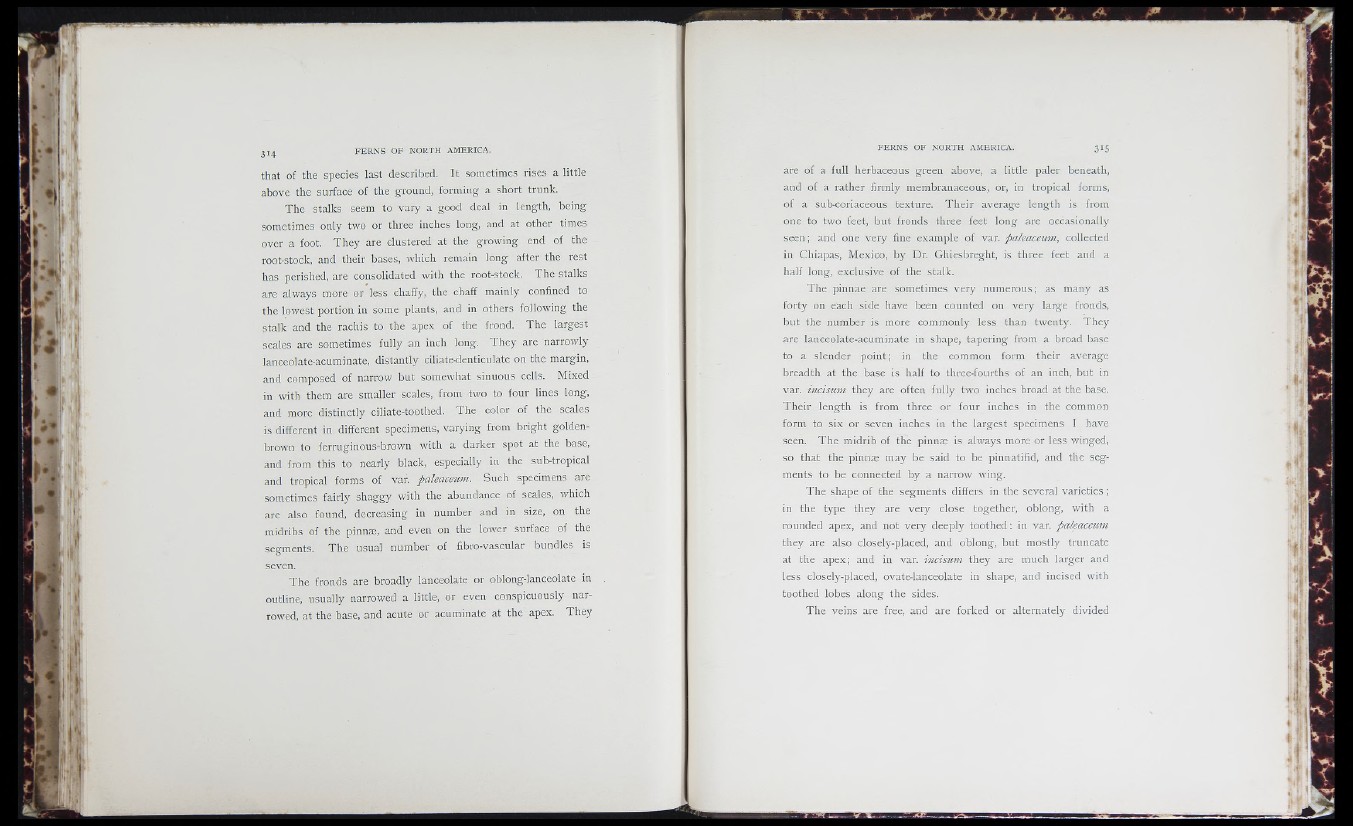
that of the species last described. It sometimes rises a little
above the surface of the ground, forming a short trunk.
The stalks seem to vary a good deal in length, being
sometimes only two or three inches long, and at other times
over a foot. They are clustered at the growing end of the
root-stock, and their bases, which remain long after the rest
has perished, are consolidated with the root-stock. The stalks
are always more or less chaffy, the chaff mainly confined to
the lowest portion in some plants, and in others following the
stalk and the rachis to the apex of the frond. The largest
scales are sometimes fully an inch long. They are narrowly
lanceolate-acuminate, distantly ciliate-denticulate on the margin,
and composed of narrow but somewhat sinuous cells. Mixed
in with them are smaller scales, from two to four lines long,
and more distinctly ciliate-toothed. The color of the scales
is different in different specimens, varying from bright golden-
brown to ferruginous-brown with a darker spot at the base,
and from this to nearly black, especially in the sub-tropical
and tropical forms of var. paleacetim. Such specimens are
sometimes fairly shaggy with the abundance of scales, which
are also found, decreasing in number and in size, on the
midribs of the pinnæ, and even on the lower surface of the
segments. The usual number of fibro-vascular bundles is
seven.
The fronds are broadly lanceolate or oblong-lanceolate in
outline, usually narrowed a little, or even conspicuously narrowed,
at the base, and acute or acuminate at the apex. They
are of a full herbaceous green above, a little paler beneath,
and of a rather firmly membranaceous, or, in tropical forms,
of a sub-coriaceous texture. Their average length is from
one to two feet, but fronds three feet long are occasionally
seen; and one very fine example of \ 3S. paleaceum, collected
in Chiapas, Mexico, by Dr. Ghiesbreght, is three feet and a
half long, exclusive of the stalk.
The pinnae are sometimes very numerous; as many as
forty on each side have been counted on very large fronds,
but the number is more commonly less than twenty. They
are lanceolate-acuminate in shape, tapering from a broad base
to a slender point; in the common form their average
breadth at the base is half to three-fourths of an inch, but in
var. incisum they are often fully two inches broad at the base.
Their length is from three or four inches in the common
form to six or seven inches in the largest specimens I have
seen. The midrib of the pinnæ is always more or less winged,
so that the pinnæ may be said to be pinnatifid, and the segments
to be connected by a narrow wing.
The shape of the segments differs in the several varieties ;
in the type they are very close together, oblong, with a
rounded apex, and not very deeply toothed: in var. paleaceum
they are also closely-placed, and oblong, but mostly truncate
at the apex; and in var. incisum they are much larger and
less closely-placed, ovate-lanceolate in shape, and incised with
toothed lobes along the sides.
The veins are free, and are forked or alternately divided
ji
ri
1
•i i